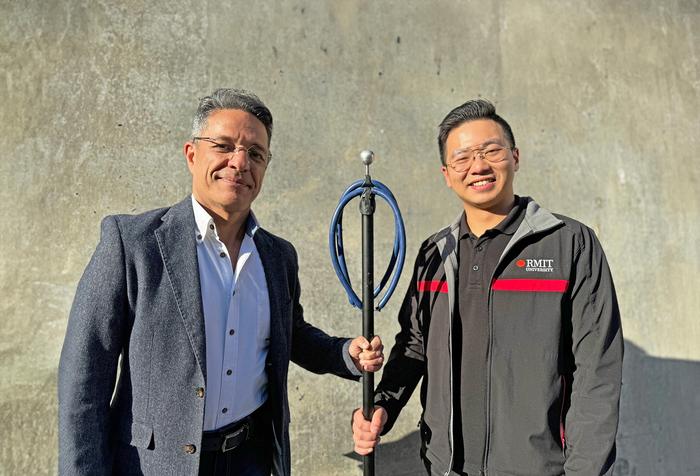Australian engineers have unveiled a clever new device – based on a modified speargun – as a cheap and efficient way to test seabed soil when designing offshore wind farms.

Credit: RMIT University
Australian engineers have unveiled a clever new device – based on a modified speargun – as a cheap and efficient way to test seabed soil when designing offshore wind farms.
The RMIT University invention launches a probe into the seabed to provide valuable data on what lies beneath.
This testing is normally done by winching or dropping probes – known as penetrometers – from the deck of a support vessel.
But for wind farm projects is shallower water these lightweight probes are less effective in penetrating the sandy seabed, while heavy-duty probes that do work can cost up to AU$200,000 a day.
The RMIT researchers tested their launching device with various probe tips in different sand mixes within a water tank, using an array of sensors and high-speed cameras to capture results.
Results now published in the Canadian Geotechnical Journal indicate the device could be twice as effective in penetrating the seafloor compared to existing lightweight free-fall soil testers, and much more cost-effective than heavy-duty probes.
RMIT PhD candidate and study lead author Junlin Rong said these results showed the device’s significant potential.
“In laboratory environments, the device showed considerably greater penetration potential compared to free-falling probes on soil. Notably, in high-density sandy material, the penetration depth was twice that of previously reported values achieved by freely falling probes,” Rong said.
“This breakthrough technique has the potential to revolutionise site investigations for wind farm projects, offering significant time and cost savings while outperforming the embedment achieved by other dynamic penetrometers.”
The device is designed with environmental friendliness in mind, as probes can be retrieved and reused after data collection, allowing ‘probe and go’ testing that minimizes disturbance to the seabed.
It can also be adapted to existing probes, allowing engineers to retrofit their current devices with minimal investment.
Rong added that while existing cone penetration testing methods would remain dominant, their launching system could reduce the number of these expensive tests needed, resulting in substantial savings.
RMIT Professor of Geotechnical Engineering Majid Nazem said the device was now ready for field trials.
“Now that our experiments have demonstrated the device’s ability to achieve considerable embedment depth in dense sand, we are keen to conduct field trials and collaborate with our potential industrial partners to further test its performance for offshore geotechnical engineering applications,” Nazem said.
This research was conducted with colleagues at the University of Melbourne in RMIT’s Heavy Structures Laboratory and supported by the Australian Research Council through the Discovery Project scheme (DP200100549).
The study, titled ‘Development of a speargun projectile penetrometer in soil’ is published in the Canadian Geotechnical Journal (DOI: 10.1139/cgj-2023-073).
Journal
Canadian Geotechnical Journal
Method of Research
Experimental study
Subject of Research
Not applicable
Article Title
Development of a speargun projectile penetrometer in soil
Article Publication Date
5-Jun-2024



